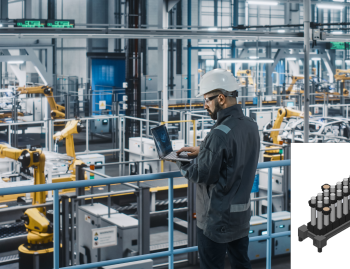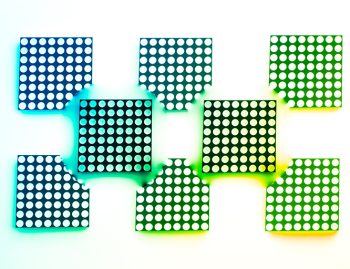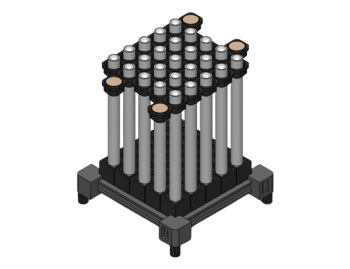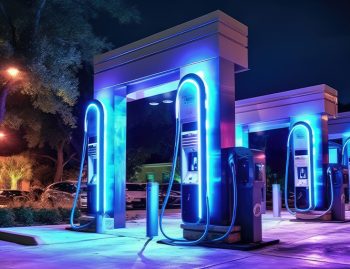
Introduction
LEDs perform key tasks in a wide variety of devices, from lighting up user interfaces to illuminating buttons and switches to enhancing design. The challenge is how to get that light from the LED to the point of use in the desired distribution.
That’s where light pipes come into play. Light pipes are transparent or translucent structures that can redirect light in three dimensions with minimal loss. Properly integrated into a design, they can yield a better product with minimal cost and assembly time.
Here, find out six key tips for success.
Tip #1: Start early
Light pipes and LEDs are essential elements of a device. Considering LED location and light-pipe design early in the product-development cycle provides an easy way to optimize device layout and operation.
The results of this integrated approach are enhanced performance, greater simplicity (and less need for customized light pipes), lower cost, and improved manufacturability.
Tip #2: Do your homework
There are many aspects of light-pipe specification. Before contacting your vendor, be sure you have a comprehensive understanding of your product requirements, application needs, and project parameters.
- How far does light need to travel from source to point of use?
- Are there obstructions? Does design require any turns (in plane or out of plane)?
- Does your design have any space constraints? Are your indication lights close together?
- What is the operating environment like? Will the device be exposed to contamination? How about shock and vibration or temperature extremes?
- What are the viewing angle, package size and diameter of the LED? Is the casing flat or steeply domed?
- Will your user interface be viewed from the front, or also from the side? In addition to these technical parameters, don’t forget about details like budget, volume, and lead time. The design has to not only perform, it has to be practical.
All of these factors will be taken into account when specifying your light pipe. For more details, reference our Handbook to Illumination Design 101 and Illumination Guide: Decisions and Options for Engineers.
Table: key parameters of light pipes
| Parameters | Rigid | Flexible |
| Distance Requirement | Up to 3 inches | Up to 100 meters |
| Bending or Shaping Requirement | Best for vertical or right-angle optical paths | Good for bending around obstacles |
| Mounting Options | Panel press-fit, board mount | Board mount (with adapter) |
| Built-In LED Option | SMD | SMD, Through-Hole |
| Ingress Protection? | Yes | Yes |
| Side by Side SMD LED Placement | Array, ZeroLightBleedTM | ZeroLightBleedTM |
Tip #3: Be strategic
Engineering is always a matter of trade-offs. Create a list of must haves versus nice to haves. The design process will be more efficient and result in a better product if you establish a consensus on priorities up front.
Tip #4: Keep it simple
Know the distinction between the innovative and the merely unusual. Complex or custom designs may seem promising, but they can be difficult and/or expensive to manufacture in volume.
Before committing to a novel feature, be certain that it truly brings value or competitive differentiation. Remember, the goal is not to build a great prototype but to design a product that can be manufactured profitably in volume.
Tip #5: Use COTS parts when possible
For some applications, only custom parts will work. More often, commercial off-the-shelf (COTS) parts will get the job done just fine.
They’re typically available with lower cost and shorter lead times, and can generally be multi-sourced. In addition, companies often offer select stock items with fast turnaround for rapid prototyping.
Tip #6: Tap your vendor’s expertise
Light-pipe selection and design may seem simple but there are many nuances that can make a major difference in the performance and appearance of a product. Vendors have decades of experience that they can bring to bear to solve your particular problem.
Start with your sales engineers but don’t hesitate to inquire about engineering services for particularly challenging problems. Consult with your vendor early in the process – this will prevent expensive mistakes and help you get products to market faster.
Light pipes and LEDs can add significant value and performance to devices and systems. By following the practices above, your design team will maximize the value of these essential components.
Contact your Bivar representative to optimize the performance, pricing, and manufacturability of your next product.
Leave a Reply Cancel reply
You must be logged in to post a comment.









